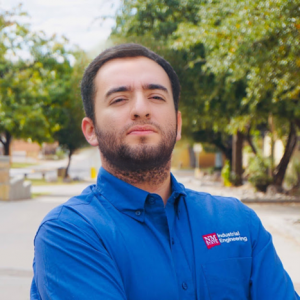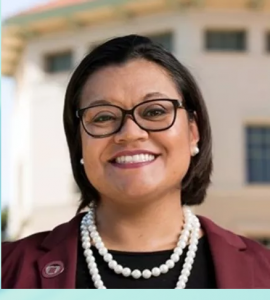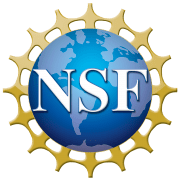Community Makerspace Programs: Enhancing Creativity, Innovation and STEM Literacies to Improve STEM Self-Efficacy of Hispanic and Indigenous Communities
Jennifer Miller, Ph.D., STEM Literacy & Learning Technology, Sul Ross State University
STEM (science, technology, engineering and mathematics) learning spaces have grown rapidly in schools, universities, libraries, and museums as “Learning Labs” or “Makerspaces.” Makerspaces are informal learning sites dedicated for creative expressions in STEAM (sciences, technology, the arts, engineering, and mathematics) in which learner’s blend digital and physical technologies in an informal learning environment to share with a wider community [1]. These spaces are designed to encourage deep engagement with STEM-integrated content, critical thinking, problem solving, and collaboration while sparking curiosity [2]. Makerspace environments provide a safe place for educators to participate in trial and error, experimentation of new technology tools, and patience when learning and investigating within a makerspace community [3].
Makerspace can often be used as a creative approach toward STEM mentoring by facilitating opportunities for STEM students to serve as a STEM “expert” or “teacher” through the design and implementation of a makerspace workshop. Quality mentorship through two-year research experiences has shown to positively impact underrepresented STEM postsecondary students’ science efficacy, identity (feeling of belonging to the STEM community), and values. In a recent longitudinal study investigating STEM mentorships MSIs, these characteristics predict STEM career pathway persistence for up to 4 years following graduation [4]. Examining persistence through a lens of social influence may address gaps exploring relationships between the scientific community, makerspace community, industry, faculty, and mentoring, and indicates how relationships might be leveraged as an agent approach toward social change.
Mobile makerspaces assist with building capacity beyond the university to assist with educator professional development toward using technologies and assist with providing connections to engineering outreach and engagement [5]. The dynamic nature of makerspace activity may help sustain faculty curiosity/intellectual growth through the inherent challenges. Mobile makerspaces offer strong internal outreach opportunities, with educators’ responding positively to faculty development centered on digital and design literacies offered in a mobile makerspace environment perhaps due to the creative and flexible approaches during pop-up activities. Mobile makerspace pop-up activities increase awareness and understanding of digital literacies in an active learning atmosphere [6]. Digital literacies in mobile environments often incorporate use of creative mobile technologies: 3D modeling, fabrication, robotics, laser cutting and lendable technologies.
Current post-secondary institutions serving underrepresented minorities often lack strong STEM mentorship systems along with many students feeling culturally isolated in STEM undergraduate programs, which presents an opportunity to improve postsecondary institutions for many Hispanic and Indigenous students. Enhancing the relevance of STEM through stronger STEM programming that values Hispanic and Indigenous culture, language, traditions, and ways of knowing through a transactional process could benefit underrepresented communities.
[1] Miller, J. (2016). Effect of Makerspace Professional Development Activities on Elementary and Middle School Educator Perceptions of Integrating Technologies with STEM (Science, Technology, Engineering, Mathematics), dissertation; Denton, Texas.,University of North Texas Libraries, Digital Library, digital.library.unt.edu.
[2] Koh, K., & Abbas, J. (2015). Competencies for information professionals in learning labs and Makerspaces. Journal of Education for Library and Information Science, 56(2), 114.
[3] Moorefield-Lang, Heather. (2015). When makerspaces go mobile: case studies of transportable maker locations. Library Hi Tech. 33(4), 462-471.
[4] Estrada, M., Hernandez, P. R., & Schultz, P. W. (2018). A longitudinal study of how quality mentorship and research experience integrate underrepresented minorities into STEM careers. CBE—Life Sciences Education, 17(1).
[5] Compeau, S. (2018). Designing a mobile makerspace: A strategy for increasing diversity by offering engineering outreach workshops to underrepresented youth. Proceedings of the Canadian Engineering Education Association (CEEA).
[6] Purpur, E., Radniecki, T., Colegrove, P. T., & Klenke, C. (2016). Refocusing mobile makerspace outreach efforts internally as professional development. Library Hi Tech.
 Dr. Jennifer Miller is a cognitive scientist who specializes in STEM literacy and learning technologies at Sul Ross State University. Dr. Miller earned a Ph.D. in cognitive science and learning technologies. Her dissertation work focused on implementing 6 NASA funded makerspace programs in Texas. Dr. Miller has worked on multiple makerspace and STEM education initiatives serving Hispanic and Indigenous populations.
Dr. Jennifer Miller is a cognitive scientist who specializes in STEM literacy and learning technologies at Sul Ross State University. Dr. Miller earned a Ph.D. in cognitive science and learning technologies. Her dissertation work focused on implementing 6 NASA funded makerspace programs in Texas. Dr. Miller has worked on multiple makerspace and STEM education initiatives serving Hispanic and Indigenous populations.
Mentoring for Undergraduates in STEM from Underrepresented Groups
Celina Morales, M.S., California State University, Northridge
Faculty-Student mentoring relationships in higher education are often beneficial to both faculty and students. Multiple studies have found students in higher education from underrepresented groups pursuing STEM benefit greatly from faculty mentorship. Both formal mentorship programs (i.e., intervention research programs) and informal mentorship (i.e., simply reaching out to a faculty member for advice) greatly impact student success and persistence in STEM disciplines in higher education.
- Underrepresented STEM undergraduate students who participate in mentored research are more likely to pursue graduate studies [1].
- Students have reported STEM mentorship has helped them with learning strategies and goal development [2].
- Students report faculty mentorship is valuable for harnessing STEM social capital in their respective fields and departments [3].
A longitudinal study assessing the long-term impact of mentorship on underrepresented minority students in STEM fields, also determined favorable outcomes [4]. Positive STEM self-efficacy and STEM identity were associated with mentorship experiences.
Graduate students are also sometimes viewed as friends and informal mentors to undergraduate students. One study documented the positive impact of mentoring relationships between graduate students and undergraduate students [5]. The undergraduate students reported perceiving the graduate students as relatable role models. Also, graduate students were very helpful to undergraduate students in navigating and managing university environments. This article highlights the importance of recognizing graduate students as prospective mentors.
Graduate students pursuing STEM advanced and terminal degrees also reported benefits from faculty mentorship. Hispanic graduate students are more likely to report faculty mentorship as a significant factor in their academic success [6]. Also, mentorship during a doctoral program was positively associated with publishing research articles [7].
One study assessed the most important qualities Hispanic graduate students consider when choosing a mentor [8]. This study found that males and females perceived different traits as more important than others. Females were more interested in mentors who they perceived as caring, open to listening, offering guidance/reassurance, and sharing relatable experiences to the student. Additionally, females reported collaboration, support, and friendship as important considerations when choosing a mentor. Males were more interested in mentors who they perceived as experts, knowledgeable, genuine, and trustworthy. Males also reported mentor availability and feeling challenged by the mentor important traits.
[1] Carpi, A., Ronan, D. M., Falconer, H. M., & Lents, N. H. (2017). Cultivating minority scientists: Undergraduate research increases self‐efficacy and career ambitions for underrepresented students in STEM. Journal of Research in Science Teaching, 54(2), 169-194.
[2] Chelberg, K. L., & Bosman, L. B. (2019). The Role of Faculty Mentoring in Improving Retention and Completion Rates for Historically Underrepresented STEM Students. International Journal of Higher Education, 8(2), 39-48.
[3] Crisp, G., Doran, E., Carales, V., & Potts, C. (2020). Disrupting the Dominant Discourse: Exploring the Mentoring Experiences of Latinx Community College Students. Journal for the Study of Postsecondary and Tertiary Education, 5, 057-078.
[4] Estrada, M., Hernandez, P. R., & Schultz, P. W. (2018). A longitudinal study of how quality mentorship and research experience integrate underrepresented minorities into STEM careers. CBE—Life Sciences Education, 17(1).
[5] Mireles-Rios, R., & Garcia, N. M. (2019). What would your ideal graduate mentoring program look like?: Latina/o student success in higher education. Journal of Latinos and Education, 18(4), 376-386.
[6] Tran, N. A., Jean-Marie, G., Powers, K., Bell, S., & Sanders, K. (2016). Using institutional resources and agency to support graduate students’ success at a Hispanic serving institution. Education Sciences, 6(3), 28.
[7] Millett, C. M., & Nettles, M. T. (2006). Expanding and cultivating the Hispanic STEM doctoral workforce: Research on doctoral student experiences. Journal of Hispanic Higher Education, 5(3), 258-287.
[8] Rudolph, B. A., Castillo, C. P., Garcia, V. G., Martinez, A. & Navarro, F. (2015). Hispanic Graduate Students’ Mentoring Themes. Journal of Hispanic Higher Education.
 Celina Morales is currently completing her MPH degree in Applied Epidemiology at California State University, Northridge. She earned her undergraduate degree in Public Health with a minor in Biology. Her research interests include nutrition and mental health among ethnic minority populations and immigrant populations. She has participated in various research training programs including MHIRT, MARC, and RISE. She enjoys reading about socio-cultural factors associated with Hispanic student experiences in higher education.
Celina Morales is currently completing her MPH degree in Applied Epidemiology at California State University, Northridge. She earned her undergraduate degree in Public Health with a minor in Biology. Her research interests include nutrition and mental health among ethnic minority populations and immigrant populations. She has participated in various research training programs including MHIRT, MARC, and RISE. She enjoys reading about socio-cultural factors associated with Hispanic student experiences in higher education.
How is College Enrollment?
Nicolas Mendez, New Mexico State University, Las Cruces, NM
It’s a new year but many universities across the US are using similar strategies from the 2020 academic year. Colleges in the Midwest and East encouraged students to self-isolate for two weeks after arriving on campus [1]. Many cities where these campuses are located experienced increased cases of COVID-19; many in-person classes returned to online platforms; and many sport’s seasons were delayed or cancelled for the semester. In addition to these problems, many students with family responsibilities such as parent or caregiver, were not able to return to school. Some common reasons for not returning to school this spring include taking care of family, fear of contracting the virus, and emotional stress [2]. As a result, enrollment declined at many institutions across the country. For instance, at the University of Colorado enrollment declined approximately 30%for most programs at every level. Similarly, Brown University enrollment decreases by 22%, and Cal State enrolled 5% fewer students than the previous year [3,4].
So, what are colleges doing to increase enrollment numbers for Fall 2021? According to an article posted by Kate Barrington, strategies community colleges are embracing include recruiting students from Central America and the Caribbean and offering courses across borders, reaching international students in their home countries [5]. Institutions, like Broward College in Florida, also are opening education centers in different countries of Latin America and Asia, inviting new cultures and new perspectives into their programs. Other strategies, such as those adopted by Palm Beach State College include focusing on local students; waiving tuition for students with a good academic performance; assigning a personal academic enrollment guide to students to assist them through the application process; and targeting high school students who showed interest in their academic programs but never finish application requirements. This strategy, also used by European universities, resulted in 12% increase in student applications compared with the previous year [6]. Anecdotally, we can conclude that when institutions intentionally support students through the application process, enrollment increases.
Contemporarily, universities in the US are using social networks such as TikTok and Twitter and virtual recruitment initiatives to reach potential students. These platforms are used to share information about their institutions, programs, and physical and virtual campuses. In addition, many institutions currently share their diversity and equity values on social media, and feature activities fostering inclusive and equitable academic environments, shown to be important to potential students [7]. Personally, I have been engaged in virtual high schools visits alongside current and former students in my department, sharing the opportunities and benefits of taking this academic path. We encourage potential students to apply to the program and the university. We are optimistic that we will see the results in the Fall semester with increased enrollment of new students.
[3] Northern Colorado, U. (2021). Interim 2020-21 Final Enrollment Information
[4] Jaschik, S. (2021, January 11). Inside Higher Ed. Retrieved from Admissions Have and Have-Nots:
 Nicolas Mendez is a Master’s student in Industrial Engineering. He is from Bogota, Colombia, and completed his Bachelor’s degree at La Salle University in 2018. During his professional career, he has worked in the pharmaceutical industry performing quality control, process analysis, and cost evaluations. He is a member of the Recruitment Team for the Department of Industrial Engineering at New Mexico State University, working with middle and high school students to pursue a career in engineering.
Nicolas Mendez is a Master’s student in Industrial Engineering. He is from Bogota, Colombia, and completed his Bachelor’s degree at La Salle University in 2018. During his professional career, he has worked in the pharmaceutical industry performing quality control, process analysis, and cost evaluations. He is a member of the Recruitment Team for the Department of Industrial Engineering at New Mexico State University, working with middle and high school students to pursue a career in engineering.
Social Networking with HSI STEM Professionals
Margie Vela, Ph.D., New. Mexico State University, Doña Ana Community College
The Community Board- The. HSI STEM Hub website hosts a Community Board for sharing. Information and opportunities across our network of administrators, faculty and staff focused on STEM at Hispanic Serving Institutions throughout the country. Our Community Board is viewable to all web users who visit the page. Posting is restricted to HSI STEM Professionals Network Members.
The Community Board hosts a variety of forums with focus areas in:
Communication from HSI STEM Hub Leadership
HSI STEM Hub leadership shares resources, opportunities, commentary, and expertise here.
Post and view COVID-19 related resources. Classroom resources, equity columns, mental health and social resources, etc.
Recommend topics for which you would like the Hub to develop resources and provide training. Our mission includes building capacity for HSIs across the country to improve graduation rates for students in STEM. Let us know how we can help you in your teaching, research, or administrative efforts as you build capacity for your institution.
Post and view grant writing resources or opportunities. We invite our network of program officers from all agencies and private funders to post any solicitation news relevant to our community of practice in this forum. All other network members feel free to post here, as well.
Institutional Capacity Building
Post and view institutional capacity building resources or opportunities for teaching and learning.
Post and view upcoming conferences and meetings. This is also the place to post/find information about conference scholarships.
Post and view multicultural awareness, diversity, equity, and inclusion resources or opportunities. This forum includes resources for enhancing diversity efforts for institutions, colleges, departments, programs or classrooms.
Connect with network members for collaboration, mentoring, and partnership. The HSI STEM Professionals Network is a great place to find collaborators for large projects, mentors in your discipline and partners for projects and other activities. Check this forum frequently to find network members that need you on their team.
Post and view research opportunities or resource. This is an ideal forum for presenting opportunities for colleagues from various types of institutions to connect for engaging in collaborations.
STEM Career Opportunities for Faculty and Staff
Post and view STEM career opportunities for faculty and staff. This is the place to post employment opportunities for STEM professionals. These can include (but are not limited to) STEM related faculty positions, administration positions, and administrative support positions.
STEM Opportunities for Students
Post and view STEM career opportunities for students. This is the place to post employment opportunities for STEM students. These can include (but are not limited to) STEM related research opportunities, internships, and post-doctoral positions.
Post and view STEM pedagogy resources or opportunities for training and learning.
The HSI STEM Researchers, Scholars and Professionals Network- You can join the network, free of charge, with your .edu, .gov, or .org email address. Membership offers a variety of opportunities including:
- Monthly newsletter
- Hub announcements
- Community board
- Member directory with over 700 network members working in STEM in higher education
- Access to potential collaborators across the country
- Exclusive member training opportunities
- Exclusive member resources and materials
The Network is a community of practice providing a unique space for HSI STEM educators to connect and engage in networking, training, resource sharing, collaborative research in a supportive academic environment. This community of practice is central to the Hub’s mission. We need your participation to create a supportive community that works together for successfully training the next generation of scientists, technologists, engineers, and mathematicians at HSIs.
Community Board: https://hsistemhub.org/cb/
HSI Network Membership: https://hsistemhub.org/join/
See Margie Vela’s bio and photo below: Newsletter Editor.
Join The HSI STEM Professionals Network!
Update Your Profile Today!
HSI STEM Hub News

Grantsmanship Trainings Now Available
Preflight Grantsmanship Certification Series is a training for first-time grant writers as you begin formulating ideas and planning for writing your first grant. Click Here for More Information
STEM Pedagogy –New Resources Click here for more information
STEMversity the Podcast hosted by President Monica Torres-
New Podcast coming April 15th – Diversity Programming in STEM with Guest Panelist: Dr. Bernadette Connors Click here for more information
Newsletter Editors
MARGIE VELA
 Margie Vela is a researcher, educator and public servant devoted to diversity, equity and inclusion (DEI) in higher education and STEM. She earned her Ph.D. in Water Science and Management from New Mexico State University (NMSU) in 2019 and served the State of New Mexico in public service as a Regent for the NMSU System from 2017-2019. She served as an intern at the National Science Foundation in 2015 and as a Farmer-to-Farmer USAID volunteer in 2018. Her career in DEI began at Fort Lee Garrison, where she served as Director for the HIRED! Program to prepare dependents of military personnel to enter college or the workforce. Her career in higher education began at a Historically Black University, in 2010, where she implemented a multi-million-dollar program focused on diversifying the STEM enterprise. Currently, Dr. Vela serves as Senior Project Manager for the NSF HSI National STEM Resource Hub working to implement a project aimed to bolster STEM at 539 Hispanic Serving Institutions in grantsmanship, multicultural awareness, institutional capacity building and STEM pedagogy: and facilitating partnerships across institutions and disciplines. Dr. Vela serves the NMSU Society for the Advancement of Chicanos/Hispanics and Native Americans in Science (SACNAS) Chapter as founding co-advisor and has served as a national panelist for SACNAS in DEI training as an alumnus of SACNAS Postdoctoral Leadership Institute. She recently earned a Certificate in DEI from Cornell University.
Margie Vela is a researcher, educator and public servant devoted to diversity, equity and inclusion (DEI) in higher education and STEM. She earned her Ph.D. in Water Science and Management from New Mexico State University (NMSU) in 2019 and served the State of New Mexico in public service as a Regent for the NMSU System from 2017-2019. She served as an intern at the National Science Foundation in 2015 and as a Farmer-to-Farmer USAID volunteer in 2018. Her career in DEI began at Fort Lee Garrison, where she served as Director for the HIRED! Program to prepare dependents of military personnel to enter college or the workforce. Her career in higher education began at a Historically Black University, in 2010, where she implemented a multi-million-dollar program focused on diversifying the STEM enterprise. Currently, Dr. Vela serves as Senior Project Manager for the NSF HSI National STEM Resource Hub working to implement a project aimed to bolster STEM at 539 Hispanic Serving Institutions in grantsmanship, multicultural awareness, institutional capacity building and STEM pedagogy: and facilitating partnerships across institutions and disciplines. Dr. Vela serves the NMSU Society for the Advancement of Chicanos/Hispanics and Native Americans in Science (SACNAS) Chapter as founding co-advisor and has served as a national panelist for SACNAS in DEI training as an alumnus of SACNAS Postdoctoral Leadership Institute. She recently earned a Certificate in DEI from Cornell University.


